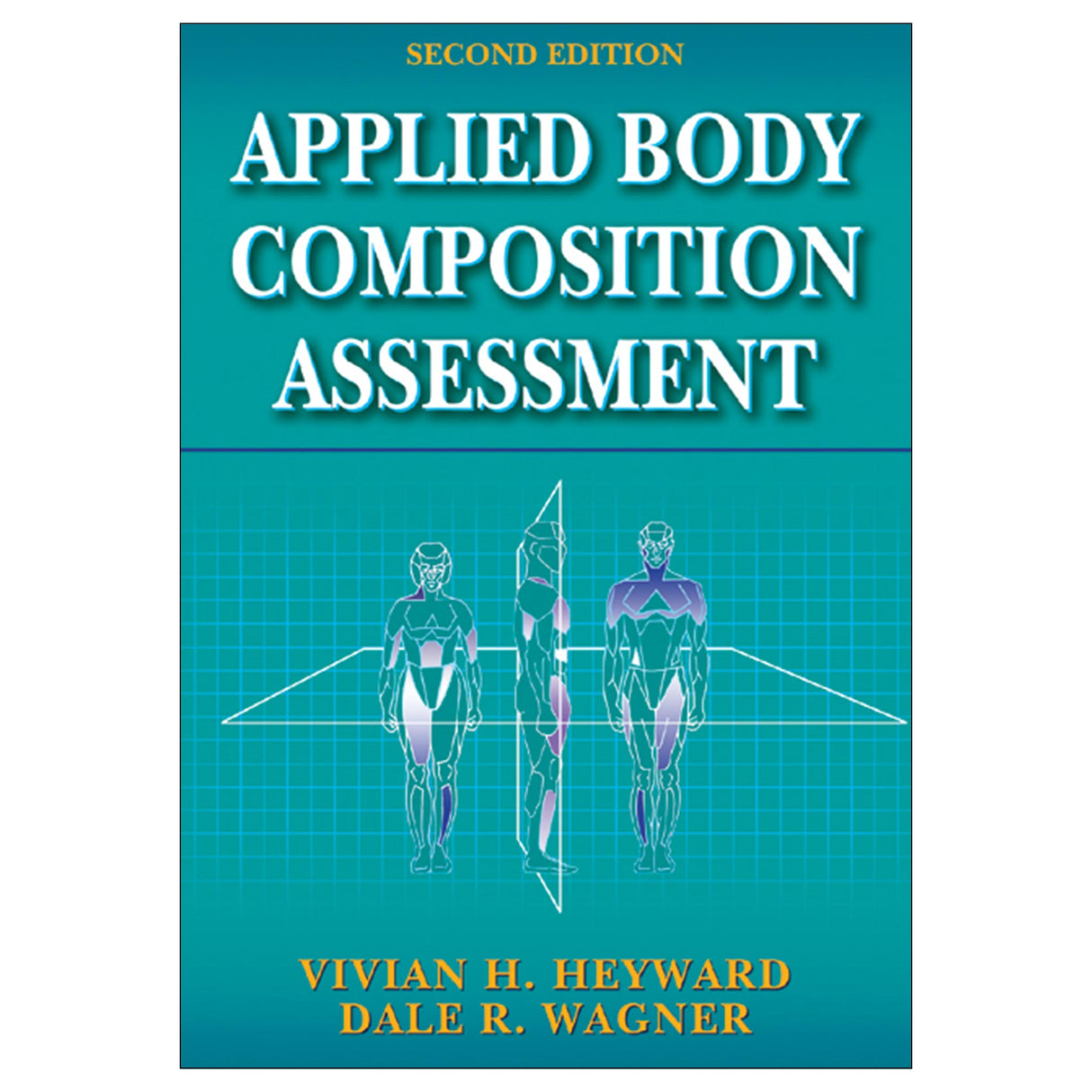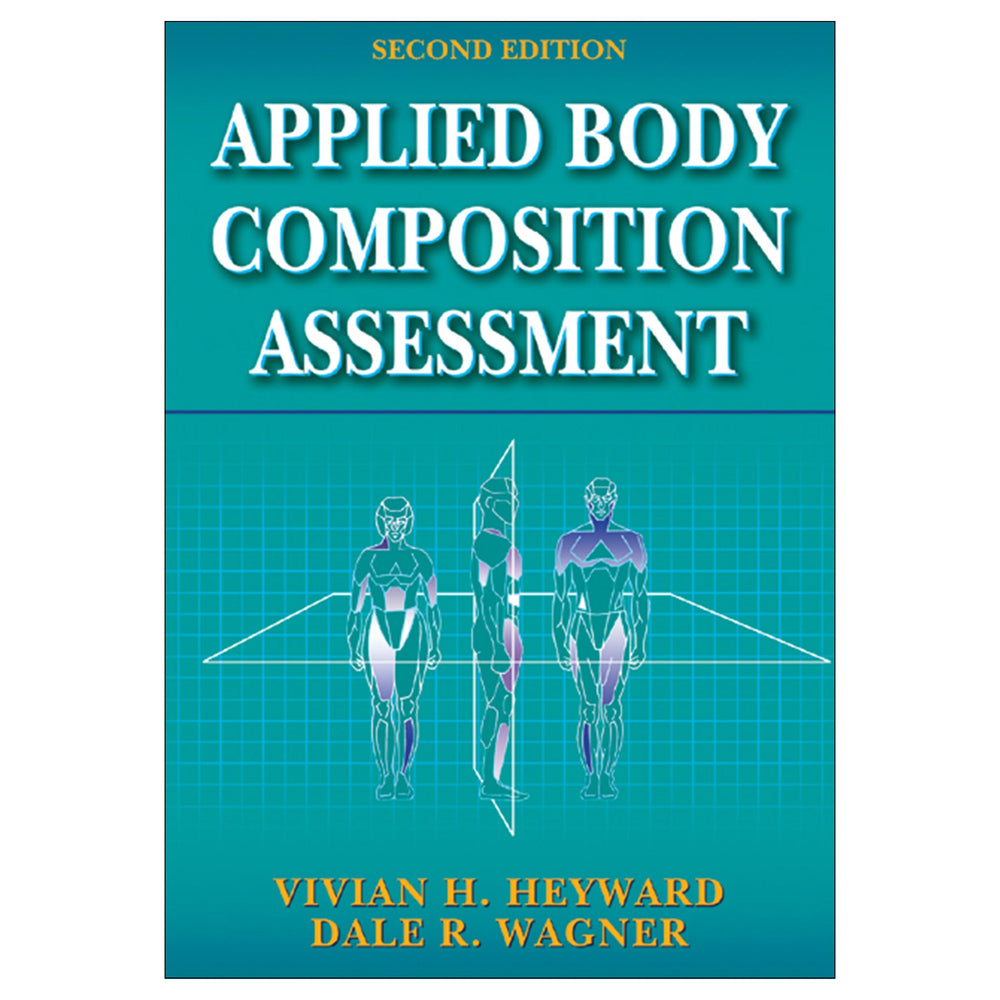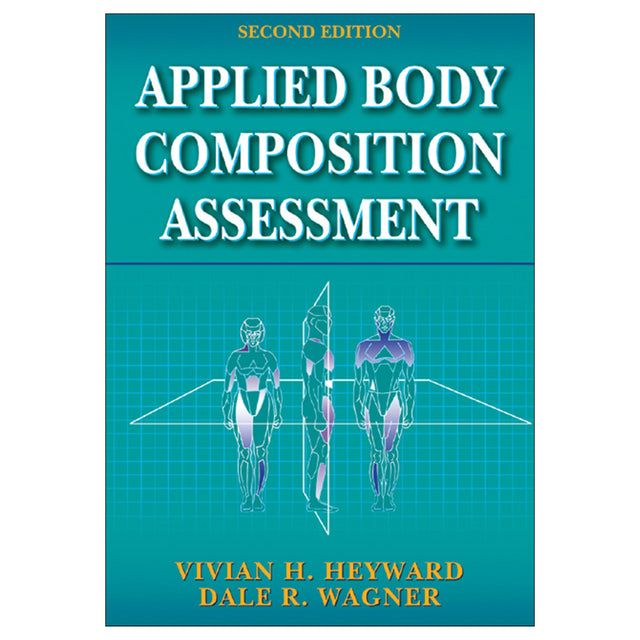Applied Body Composition Assessment-2nd Edition
Author: Vivian Heyward, Dale Wagner
$49.00 CAD
Like the popular first edition, this book addresses the principles underlying the skinfold, bioelectrical impedance, near-infrared interactance, and anthropometric methods of body composition assessment. Applied Body Composition Assessment, Second Edition, also shows you how to control for potential errors in measurement, different equations for different populations, and much more. The second edition has been expanded to include the following:
- Equations based on the most recent research
- Recommendations reflecting the latest developments in body composition methods
- New material on measuring the body composition of clinical populations, including those with cardiopulmonary, metabolic, and wasting diseases and disorders
- More comprehensive coverage of the theoretical and scientific bases of body composition assessment, including more extensive coverage of body composition models and reference methods
- Pedagogical aids, including key questions that initiate each chapter; key terms, key points, review questions at the end of each chapter; and an instructor guide and test package
An entire chapter is devoted to each body composition assessment method, including information on its assumptions and principles, prediction models, techniques for use, potential sources of error, and the most recent research on assessing changes in body composition. In addition, the authors discuss how to choose the best method and equations for a variety of healthy populations, as well as the clinical populations noted previously, taking into account age, gender, ethnicity, physical activity level, and disease.
Three appendixes provide practical tips for understanding conversion formulas for two-component models, tables that help you find appropriate methods and equations for your clients, and contact information for equipment manufacturers. More than 60 photos and illustrations complement the text.
Students will find that the book is full of helpful review and summary tools that facilitate absorbing the wealth of information. These pedagogical aids include key term lists, chapter summaries, review questions, a glossary, a list of symbols, 51 tables that neatly package key information, and step-by-step instructions for each body composition method.
Audience
A reference for body composition professionals, fitness professionals, nutrition specialists and clinicians; a textbook for body composition, nutrition, and exercise science courses
Chapter 1. Body Composition Definitions, Classification, and Models
- Definitions and Classification of Body Fatness
- Body Composition Models
- Review Material
Chapter 2. Use of Regression Analysis in Body Composition
- Basic Statistical Concepts
- Bivariate Regression Analysis
- Multiple Regression Analysis
- Polynomial Regression
- Cross-Validation Techniques
- Criteria for Evaluating Methods and Prediction Equations for Groups
- Criteria for Evaluating Methods and Prediction Equations for Individuals
- Review Material
Chapter 3. Body Composition Reference Methods
- Hydrodensitometry
- Air Displacement Plethysmography
- Hydrometry
- Dual-Energy X-Ray Absorptiometry
- A Combined-Methods Approach for Reference Measures
- Additional Reference Methods
- Summary
- Review Material
Chapter 4. Skinfold Method
- Assumptions and Principles of the Skinfold Method
- Skinfold Prediction Models
- Using the Skinfold Method
- Skinfold Technique
- Sources of Measurement Error
- Review Material
Chapter 5. Additional Anthropometric Methods
- Assumptions and Principles of the Anthropometric Method
- Using the Anthropometric Method to Estimate Body Composition
- Using Anthropometric Indices for Classification of Disease Risk
- Using Anthropometric Measures for Frame Size Classification and
- Anthropometric Profiles
- Review Material
Chapter 6. Bioelectrical Impedance Analysis Method
- Assumptions and Principles of the BIA Method
- BIA Models and Approaches
- Using the BIA Method
- BIA Technique
- Sources of Measurement Error
- Review Material
Chapter 7. Near-Infrared Interactance Method
- Assumptions and Principles of the NIR Method
- NIR Prediction Models
- Using the NIR Method
- NIR Technique
- Sources of Measurement Error
- Review Material
Part II: Body Composition Methods and Equations for Healthy Populations
Chapter 8. Body Composition and Children
- Fat-Free Body Composition of Children
- Body Composition Models and Reference Methods
- Field Methods and Prediction Equations
- Review Material
Chapter 9. Body Composition and Older Adults
- Fat-Free Body Composition of Older Adults
- Body Composition Models and Reference Methods
- Field Methods and Prediction Equations
- Review Material
Chapter 10. Body Composition and Ethnicity
- Body Composition Models and Reference Methods
- Assessing Body Composition of African Americans
- Assessing Body Composition of American Indians
- Assessing Body Composition of Asians
- Assessing Body Composition of Caucasians
- Assessing Body Composition of Hispanics
- Review Material
Chapter 11. Body Composition and Athletes
- Fat-Free Body Composition of Athletes
- Body Composition Models and Reference Methods
- Field Methods and Prediction Equations
- Low Body Fat and Health Risks
- Review Material
Part III: Body Composition Methods and Equations for Clinical Populations
Chapter 12. Body Composition and Cardiopulmonary Diseases
- Coronary Artery Disease and Heart Failure
- Heart and Lung Transplants
- Chronic Obstructive Pulmonary Disease and Restrictive Pulmonary Disease
- Cystic Fibrosis
- Review Material
Chapter 13. Body Composition and Metabolic Diseases
- Obesity
- Diabetes Mellitus
- Thyroid Diseases
- Review Material
Chapter 14. Body Composition and Wasting Diseases and Disorders
- Anorexia Nervosa
- HIV and AIDS
- Cancer
- Kidney Failure and Dialysis
- Cirrhosis and Other Liver Diseases
- Spinal Cord Injury
- Neuromuscular Diseases
- Review Material
Chapter 15. Assessing Body Composition Changes
- Reference Methods
- Field Methods and Prediction Equations
- Summary
- Review Material
Appendix A. Derivation of Constants for 2-C Model Conversion Formulas
Appendix B. Field Methods and Prediction Equation Finders
B.1 Field Method and Prediction Equation Finder for Healthy Adults
B.2 Field Method and Prediction Equation Finder for Children and Older Adults
B.3 Field Method and Prediction Equation Finder for Athletes
B.4 Field Method and Prediction Equation Finder for Clinical Populations
Appendix C. Sources for Body Composition Equipment
Abbreviations and Symbols for Terms
Glossary
References
Index
About the Authors
“This is the most comprehensive textbook on body composition assessment available.”
Club Industry
“...the strength of this book is the concise and detailed presentation of tests, measurements, and questionnaires that are readily applied to all age groups of fitness clients.”
The Journal of Orthopaedic and Sports Physical Therapy (review of first edition)
Instructor guide. Includes a suggested syllabus, lab activities, class projects, graphics for classroom use, and more.
Test package. Features a bank of 300 true-or-false and multiple-choice questions and 150 essay questions.





